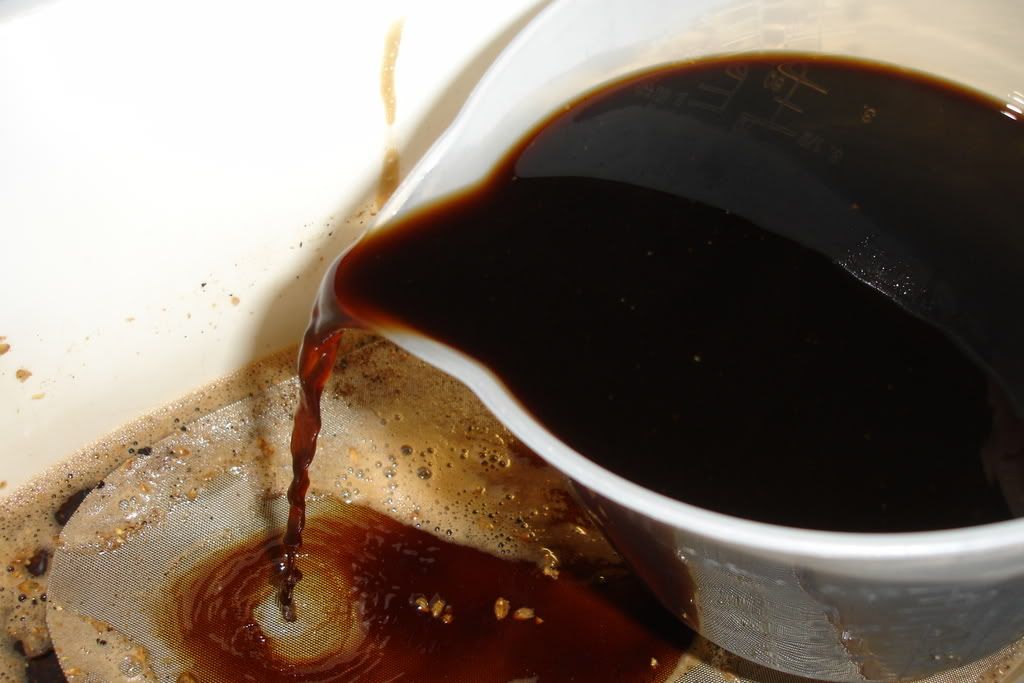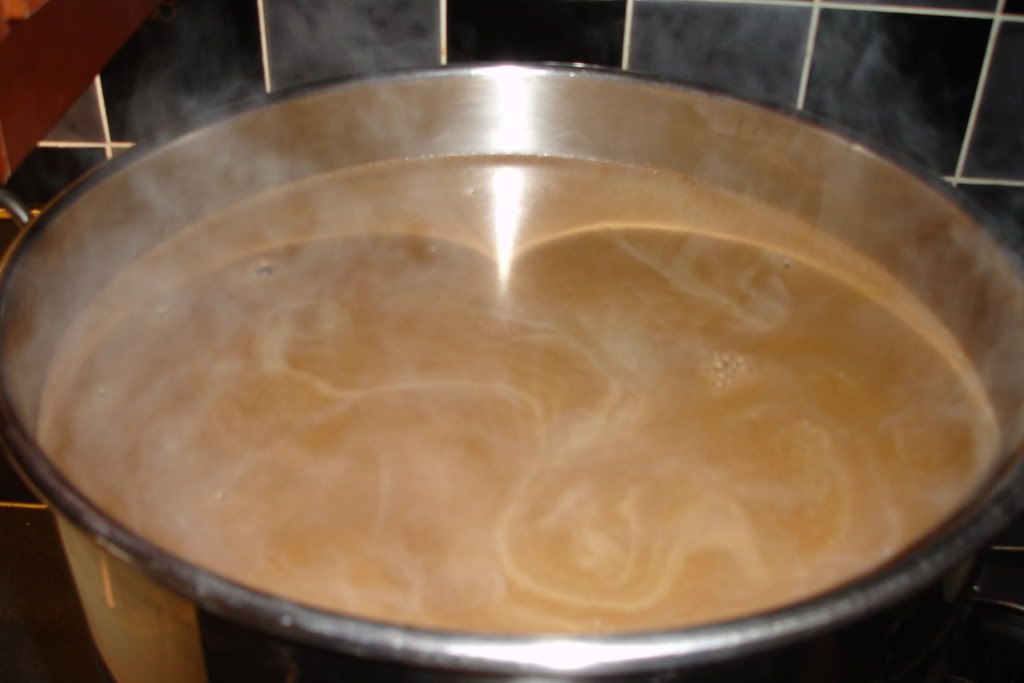 I have avoided using smoked malt up to now because I find the phenols a little difficult to deal with. The Bamberg type smoked ales are like smoked bacon in a glass to my mind and a little hard to stomach. Recently however I have developed a taste for Islay single malts which are very high in peat smoke phenols indeed. As a result I decided a hint of this in a porter might not be a bad thing. There are problems with this because I had no idea how much smoked malt to use to get the hint of smoke I wanted. Anyhoo, the recipe looked like this:
I have avoided using smoked malt up to now because I find the phenols a little difficult to deal with. The Bamberg type smoked ales are like smoked bacon in a glass to my mind and a little hard to stomach. Recently however I have developed a taste for Islay single malts which are very high in peat smoke phenols indeed. As a result I decided a hint of this in a porter might not be a bad thing. There are problems with this because I had no idea how much smoked malt to use to get the hint of smoke I wanted. Anyhoo, the recipe looked like this:Maris Otter 3.8 kg
Smoked malt 500g
Chocolate malt 250g
Black malt 200g
250g Muscovido dark sugar
Pilgrim 40g 6o mins
Pilgrim 15g 20 mins
Mashed at 67 C
OG 12 Plato
1.2 litre British ale starter
In the end I just added all the smoked malt I had. It didn't smell that strong from the pack and didn't dominate the wort in any way, so I shouldn't have to worry about an imbalance. I think my brewing software overstated the extract from some of the malts because the gravity fell short and I also too
 k off a bit more sparge than intended, but I didn't want to boil for longer to concentrate the wort so threw in some rich brown sugar. It should add a little more complexity and brought the gravity up to a respectable level.
k off a bit more sparge than intended, but I didn't want to boil for longer to concentrate the wort so threw in some rich brown sugar. It should add a little more complexity and brought the gravity up to a respectable level.I also loaded the liquor with calcium chloride to make up for the poor levels of calcium in my water and add some fullness. I am interested to know just how high a concentration of various salts brewing liquor can bear before it starts to have a negative effect on the beer. Burton brewing water has around 700ppm sulphate which is very high indeed and makes for very hard water. Burton ales have always been known for excellent clarity, but it took an understanding of brewing chemistry before it was established that the very high levels of calcium in the brewing water was contributing to excellent break formation and yeast flocculation. I plan to play with water treatment over the next few brews to see what improvements various salts may add to my beer.
4 comments:
What happened to Pilgrim's Promise?
The Pilgrim is sitting on a bed of hops and has the usual Saf 05 issues. I think I'll fine this time to speed things along.
Forgot to mention, maybe your local water is high in bicarbonates?? That might be why you've had troubles with beers that are pale. You're using local Dublin water? This is probably best suited for stouts. Should be interesting to compare the OS with PP.
My water is certainly high in carbonates but I treat it to varying degrees with an acid blend to meet mash pH. There isn't much carbonate left by the time it gets to the fermenter.
Post a Comment